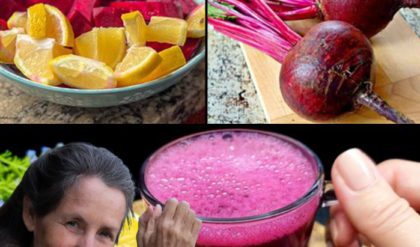Peppers, with their vibrant hues and diverse flavors, are a must-have in any kitchen. Whether it’s the sweet crunch of bell peppers or the fiery spice of chili varieties, growing peppers at home offers not only superior taste but also the joy of cultivating unique types that might not be available in stores. Here’s how you can grow your own peppers at home and enjoy an abundant harvest.

1. Select the Perfect Pepper Variety
The first step to a thriving pepper garden is choosing the right variety that suits your taste and growing conditions:
- Bell Peppers: Sweet, crisp, and available in shades like green, red, yellow, and orange.
- Jalapeños: Medium heat, ideal for adding a mild spice to your dishes.
- Habaneros: Extremely spicy, perfect for heat enthusiasts.
- Poblano Peppers: Mildly spicy and versatile, great for stuffing.
- Banana Peppers: Tangy and mild, ideal for pickling or fresh salads.
2. Provide Plenty of Sunlight
Peppers are sun-loving plants. Ensure they receive at least 6-8 hours of direct sunlight daily. If you’re growing them indoors or in areas with limited natural light, supplement with grow lights to keep them healthy and productive.
3. Prepare Nutrient-Rich, Well-Drained Soil
Healthy soil is key to vibrant pepper plants. Mix compost or aged manure into the soil to boost its fertility and drainage. Aim for a slightly acidic to neutral pH (6.0-7.0), which peppers thrive in.
4. Start Seeds Indoors for a Head Start
Begin by planting seeds indoors about 6-8 weeks before the last frost date in your region. Use seed trays or small pots with seed-starting mix, planting the seeds ¼ inch deep. Keep the soil moist, and once seedlings have two sets of true leaves, transplant them into larger containers before moving them outdoors.
5. Transplant with Care
Wait until the soil consistently reaches temperatures above 60°F (15°C) before transplanting. Space plants at least 18 inches apart to ensure proper airflow and room for growth. Water them thoroughly after planting to help them adjust to their new environment.

6. Master the Art of Watering and Fertilizing
Peppers need regular watering, especially during dry spells, but they dislike waterlogged soil. Mulching can help retain moisture. Fertilize every 3-4 weeks with a balanced, all-purpose fertilizer to support healthy growth and fruit production. Be cautious not to over-fertilize, as it can lead to excessive leaf growth at the expense of fruit.
7. Prune and Support for Maximum Yields
Prune your pepper plants by removing small shoots (suckers) that grow at the base. This encourages better airflow and directs energy to fruit production. Staking or using cages can prevent branches from breaking under the weight of the peppers.
8. Keep Pests and Diseases in Check
Common pests like aphids, spider mites, and hornworms can harm your plants. Use natural remedies like neem oil or insecticidal soap to control infestations. Prevent diseases such as bacterial leaf spot by practicing good garden hygiene and avoiding overhead watering.
9. Harvest at the Right Time
Peppers can be harvested at different stages of maturity. Green bell peppers are ready when firm and green, but leaving them longer will allow them to turn red, yellow, or orange for a sweeter flavor. Hot peppers like jalapeños can be picked green or left to ripen for more heat. Always use sharp scissors or shears to cut the peppers, preserving the stems and avoiding damage.

Why Grow Peppers at Home?
Homegrown peppers offer unmatched freshness, flavor, and the satisfaction of cultivating your food. With the right care, you’ll enjoy an abundant harvest that transforms your dishes and elevates your culinary creations. Whether you love sweet or spicy, growing your own peppers is a gratifying and delicious venture.
So, grab your gardening gloves and start planting today. With patience, care, and a little effort, you’ll be rewarded with a garden bursting with vibrant peppers ready to enhance every meal. Share this guide with your fellow gardening enthusiasts and inspire others to embark on this flavorful journey!





